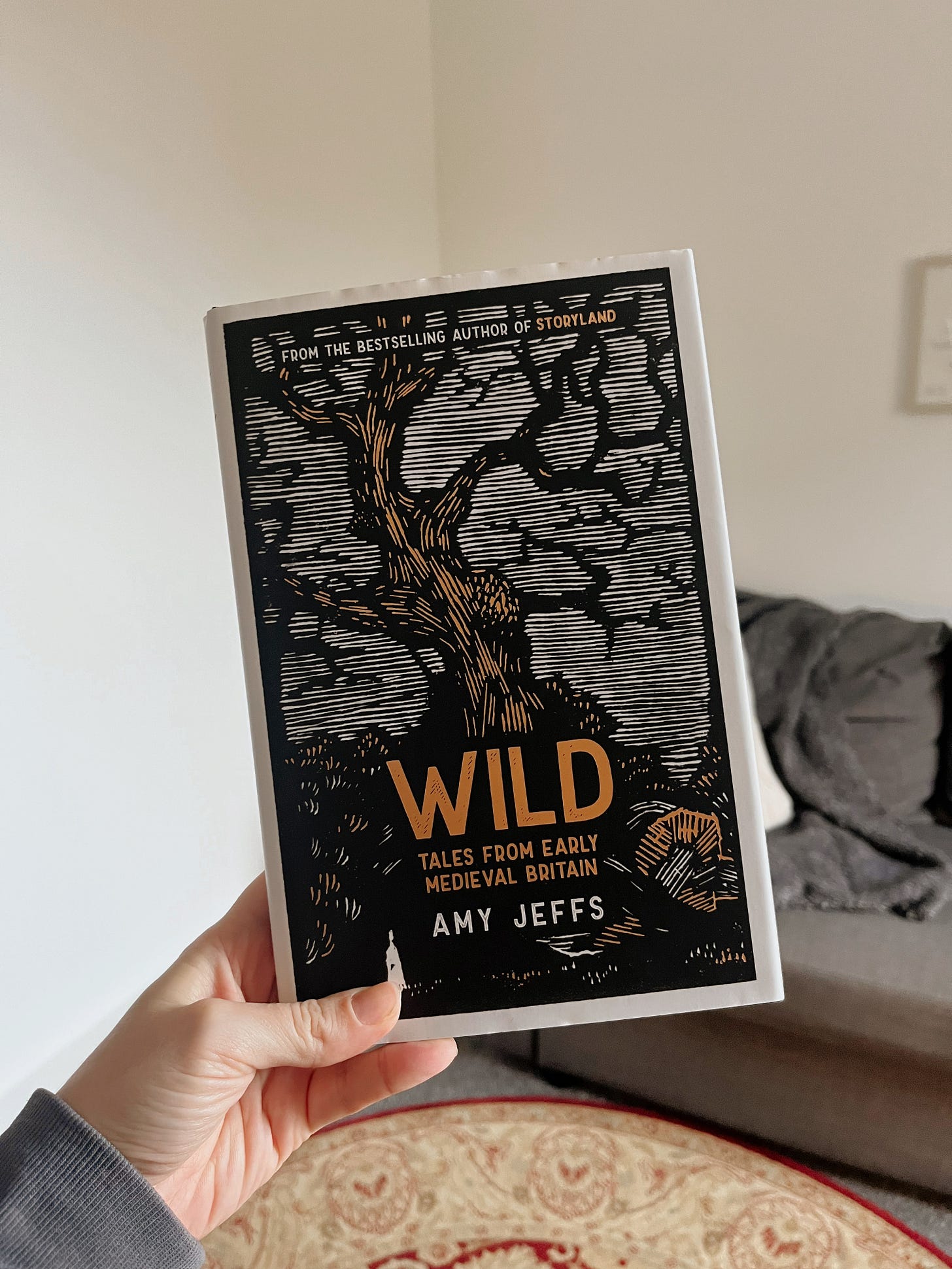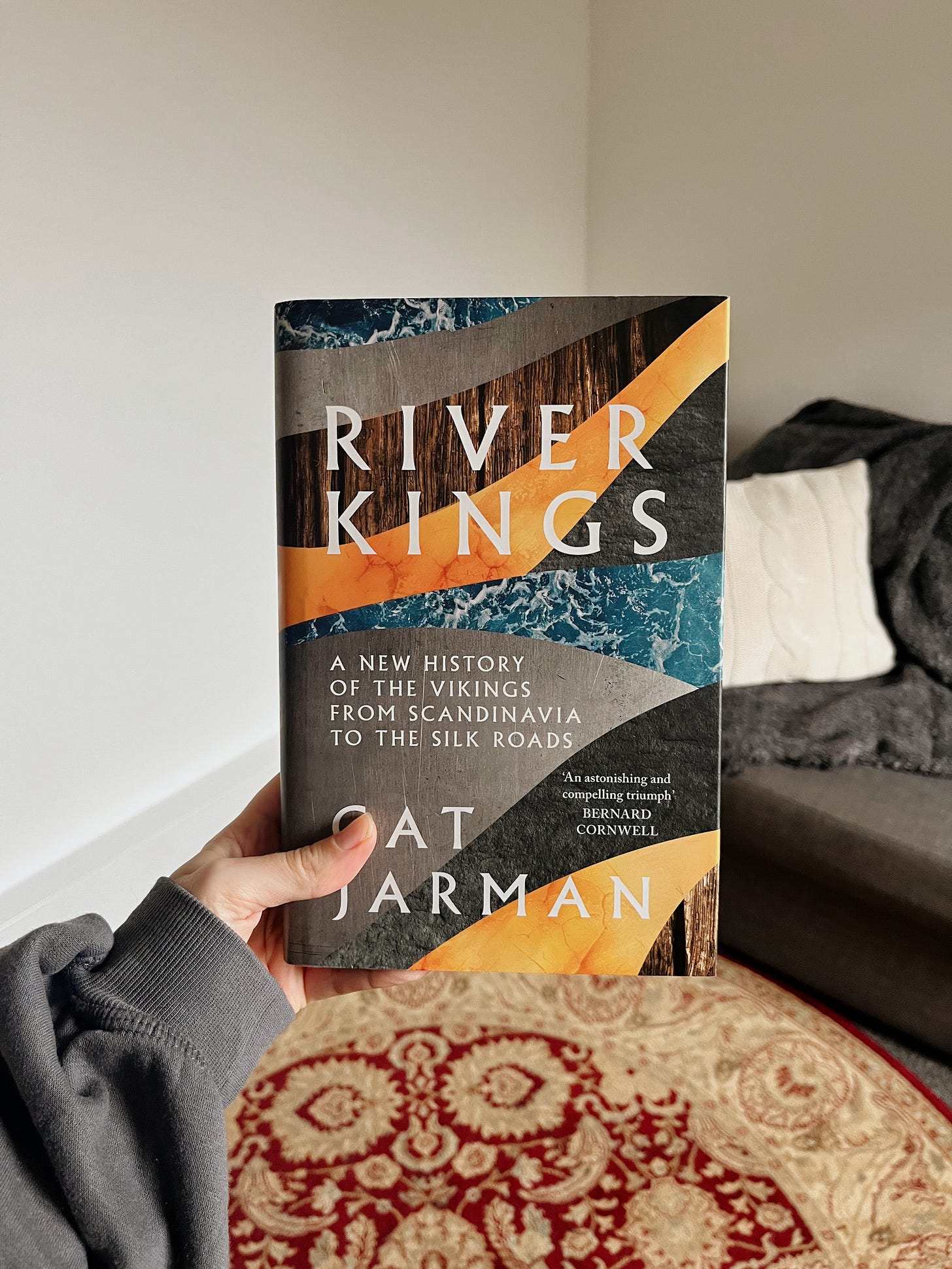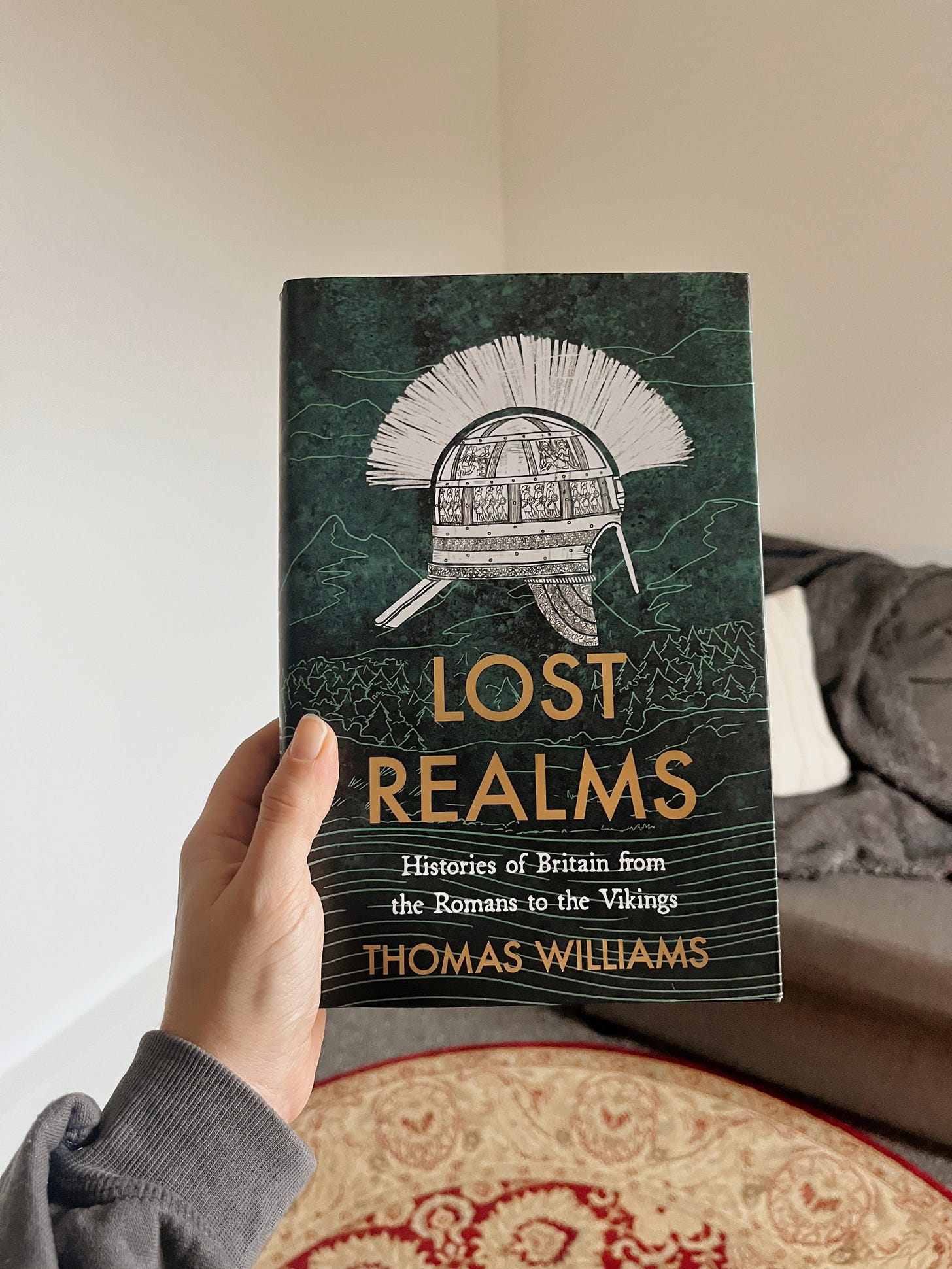Recovered voices? Stories from the deep past
Mini-reviews of five books I've been loving lately
These reviews will usually be focused on one book, with an in-depth look at the content and overall style. This first review post, however, is a bumper one, with five mini-reviews to get the series started.
Amy Jeffs (2022), Wild.
This is one of the most beautifully-written books I have read in a long time. Combining storytelling and literary appreciation, Jeffs brings a multitude of medieval tales to life, using written and archaeological sources to build her stories. Each chapter begins with her creative retelling of one or more tales, followed by an exploration of the historical and cultural background of the sources she’s used. ‘Landscape’ is the common thread that runs through the book as a whole, with chapters entitled ‘Earth’, ‘Ocean’, ‘Forest’, ‘Beast’, ‘Fen’, ‘Catastrophe’, and ‘Paradise’. This was chosen, Jeffs says, because the concept of wilderness is enjoying something of a ‘renaissance’ in modern culture (p.4), while the people she writes of ‘looked for lessons in every leaf, swarm and downpour’ (p.5). Wilderness was, she claims, central to their world view, and thus this is the lens through which she has chosen to study the tales they have left behind. Jeffs’ particular success is bringing to life the fictional characters of a lost age, reinventing them as ‘3D’ characters with a palpable texture more accessible to the modern reader than in their original, medieval form. Her book promises to make alive to popular readership these tales now lost to all but the smallest of academic audiences.
Alice Roberts (2022), Buried.
Buried is the second in Roberts’ trilogy: Ancestors (2021), exploring British prehistory through seven burials; Buried (2022), studying the first millennium in Britain through a further eight burials; and Crypt (forthcoming, 2024), taking the series into the later Middle Ages. Roberts is both an archaeologist and a scientist, which is where the uniqueness of her approach lies: her ability to explain the archaeological and historical significance of a burial alongside the scientific analysis conducted on a skeleton or its surroundings. Although her focus is primarily Britain, she skilfully places this in its wider global context, drawing parallels where appropriate with burials further afield. The real success of her writing, however, is the way in which she brings to life those she writes about. It is very difficult to tell the stories of those ordinary unnamed men and women who walked these shores during the first millennium A.D.: so often the only record of their existence are their bones. Their bones do, however, tell their stories, even if only a snapshot of the vibrant people they once were. Roberts’ chapter ‘Death in the Villa’, recounting the tragic case of a cemetery with a large number of neonate and infant burials, captures particularly well the humanity of the individuals who laid their babies to rest at Yewden Roman Villa, including their ‘expressions of tenderness, love and deep grief for lost infants’ (p.53). We so often forget that these were real people, with real loves and real losses just as we experience today.
Cat Jarman (2021), River Kings.
River Kings combines several approaches to history to weave a tale connecting medieval midland England through central Europe to, eventually, India: it is, at once, migration history, object history, cultural history, microhistory, archaeology… Jarman tells the story of how a carnelian bead ended up in a mass grave in Repton, pausing along its physical journey (which she takes in reverse, from Repton to Gujarat) to explore the impact of the Vikings in various locations. Her central thesis is that they were far more involved in eastern European and central Asian history than is often thought, perhaps by means of a slave trade running along the Silk Roads. She builds a picture of the different hands that the bead may have travelled to in order to illuminate the broader context of Viking history in areas not usually thought to have been impacted by these travelling raiders, certainly not by popular British histories of the Vikings. She broadens the reader’s horizons beyond such events as the attack on Lindisfarne and characters like King Cnut to weave a picture of connection and interaction. Her approach, to tell this story through the ‘eyes’ of the bead, is an interesting and unique one; I’m not sure that I have read another book that takes an object as its starting point in this way.
Eleanor Parker (2022), Conquered.
1066 is possibly one of the most famous dates in English history, the story of the Norman Conquest one of the most well known. Political histories of the Conquest often focus on the ‘main characters’, those such as: William, duke of Normandy; Edward the Confessor, king of England; and Harold Godwineson, king of England. At the other end of the spectrum, social histories seek to reconstruct histories of the Conquest ‘from below’, exploring its impact on the ordinary men and women. Parker offers a new perspective on the Norman Conquest, charting its impact on notable figures who were children, disenfranchised much as ‘ordinary’ people were, at the time of William’s invasion. These individuals were powerless, at the mercy of others, yet witness to some of the most significant changes in English history. (1066 is a famous date for a reason) Parker’s writing manages to straddle a popular and academic style, blending together interesting stories at an accessible level whilst drawing, clearly, on heavy amounts of thorough research. She illuminates well the lives of those who navigated the Conquest successfully as well as some more tragic tales, who are all often left out of major histories of the time.
Thomas Williams (2022), Lost Realms.
Much as Parker focused on individuals often pushed aside in favour of their more famous contemporaries, Williams tells the stories of nine English/British kingdoms frequently overshadowed by the likes of Wessex, Mercia, and Northumbria. Lost Realms does not shy away from including in its retellings elements of myth and folklore: these were, after all, how the inhabitants of these realms chose to remember themselves. The strength of Williams’ work is his focus on these lesser-known kingdoms. Their histories have not been recorded in as much detail as their more powerful and enduring counterparts; this does not mean they are not worthy of study, even if this may prove more challenging and involve a degree of conjecture. They were full of vibrant people with vibrant lives and although their individual histories may not be recoverable, pictures can be painted of the realms in which they lived. This is something that Williams does masterfully.
All photos author’s own.











